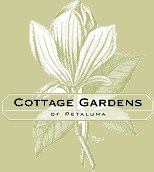
Plums
Growing Plums Successfully
Planting: Dig hole at least one foot greater in diameter than the total spread of roots the depth of the longest root. • Fill in lower 2 inches of hole with mixture of 50% native soil and a 50% mix of Soil Booster and 1-2 cups of Worm Gold . Press this mixture down firmly. Create a mound in the center of the hole with the soil mixture. Set tree upright in hole with stem in center. • Spread out roots as evenly as possible over the mound of soil and back fill mixture around all roots. Fill in hole completely. • Add 1 cup of fertilizer such as E.B. Stone All Purpose Plant Food or E.B. Stone Citrus and Fruit Tree Food. • Make a basin for holding water by building a circular ridge around the diameter of the hole and fill slowly with water. The water will settle the soil around the roots. • The graft should be positioned about 2 inches above ground level, facing north.
Watering: Water when the soil 6 inches below the surface is just barely moist. • Apply enough water to wet the soil 3 to 4 feet deep. • Mature trees will require less watering, but should still get regular water during summer.
Feeding: Feed three to four times during the growing season with a balanced fertilizer (16-16-16) such as E.B. Stone All Purpose Plant Food or E.B. Stone Citrus and Fruit Tree Food . • Avoid fertilizers too high in nitrogen as they will stimulate leafy growth at the expense of fruit production. • Fruit drop is a common problem in young trees. Water regularly and feed once in late winter or early spring. • Do not over fertilize!
When to Expect Fruit: New whips are about 2 years old, so small crops will begin in about 2-3 years.
Pruning: The success of any deciduous fruit tree depends a great deal upon the initial training it receives the first three years. These instructions apply to all deciduous fruit trees except pecans and walnuts.
1 st Year: Cut off the main leader or central stem 30” from the ground. If there are any lateral (side) branches make the cut 30” above a good strong lateral branch. • Select two other lateral branches, one about 8” below the top branch, the other 16” below. • Make your selection of these branches so that when you look down the tree from directly above, the three branches spiral equally. By selecting branches spaced in this manner, the tree will develop a crotch that is less apt to split in later years. • Head back any remaining branches to one-half of their original length. • As the tree grows, allow only 2 buds on each branch to develop; one at the end and one halfway between the end and the base. Let these branches grow to their full development without further summer pruning and rub off any shoots that may appear on the trunk as suckers.
2nd Year: Choose six well developed branches and cut back about two-thirds of their length. Cut just above a strong bud or lateral branch. • Head back all other lateral branches to one-half of their length.
3-5 Years: Continue to prune in a vase shape, in which widely angled branches are encouraged to grow in spiral placement around the trunk. Do not allow narrow-angled crotches to develop. • Don't worry about fruit production for the first 4-5 years. Prune to develop strong, evenly spaced branches. • To prune mature trees, remove dead, diseased and disoriented wood, especially those growing in towards the center of the tree. Keep the center open to light and air circulation. • Head back remaining branches from 1/3 to ¼ of their length. The older the tree, the more they should be cut back. • Plums produce fruit on spurs that live for 2-4 years. Prune out branches that have stopped producing. • To keep trees smaller, regular summer pruning can supplement winter pruning. Prune whips back to desired height after fruiting.
Pests and Diseases: Brown Rot. Blossoms and young leaves wilt, decay and turn brown. Apply Serenade or Liquicop at detection and three weeks before harvest if needed (be sure to wash treated fruit). Clean up and destroy all debris regularly. • Scale are insects that appear as crusty bumps. Young scale (crawlers) can be found a month after full bloom. Both can be killed with Summit Year Round Spray Oil. • Peach tree Borers. Holes appear in trunk and crotches. A thick gummy substance may ooze from holes. Apply an insecticide containing chlorpyrifos to trunk and lower branches (do NOT spray fruit or foliage). The following year, spray again in May or June. • Aphids and Mites. Spray with Summit Year Round Spray Oil or a good Insecticidal Soap .
Click HERE to return to our Fruit page.